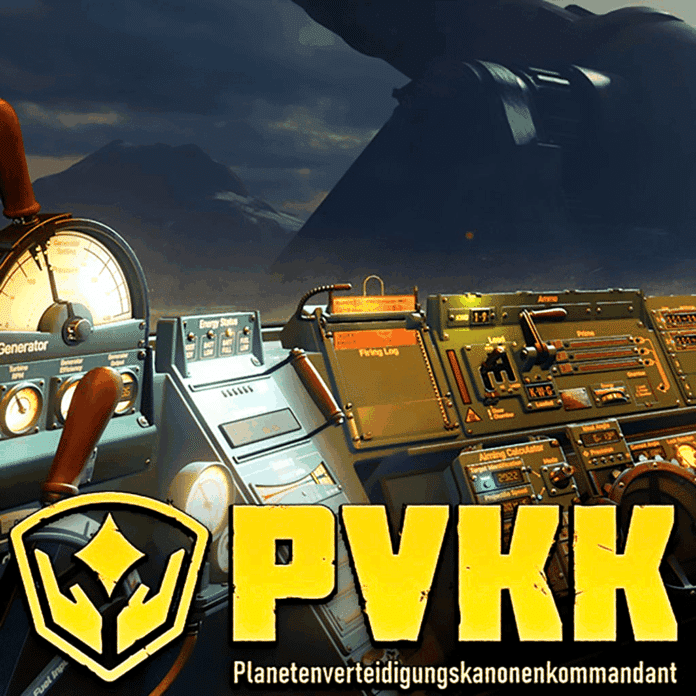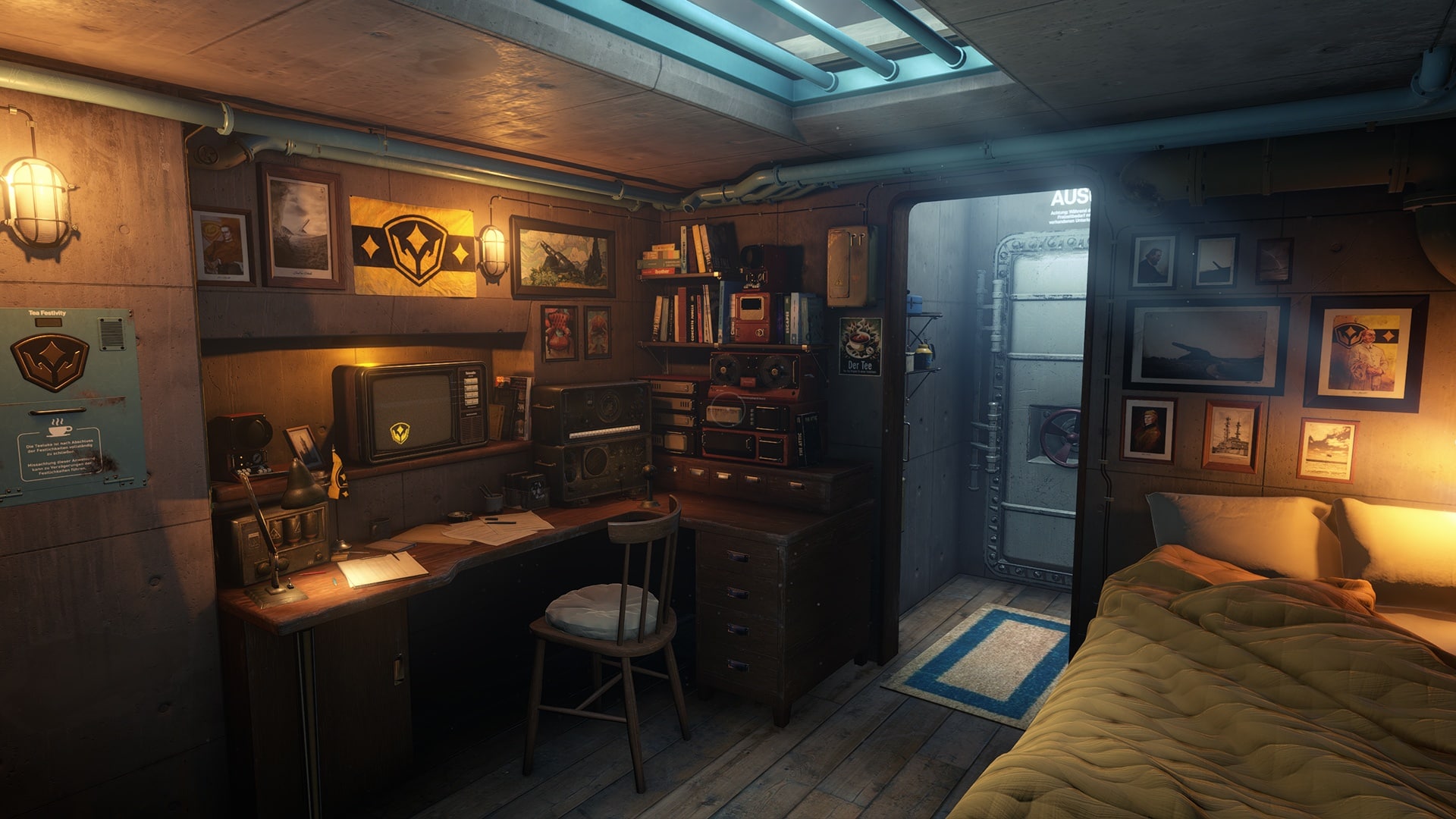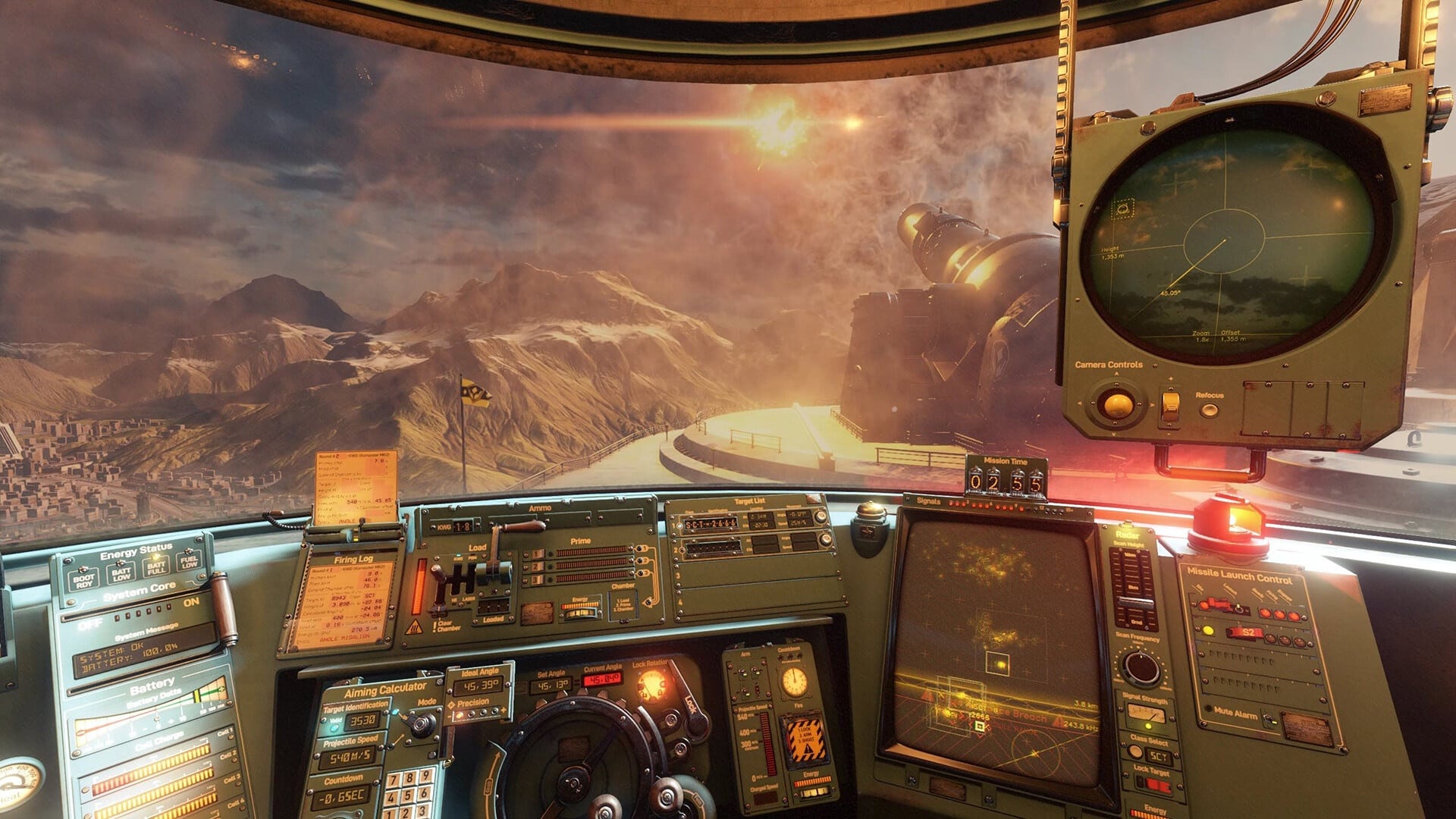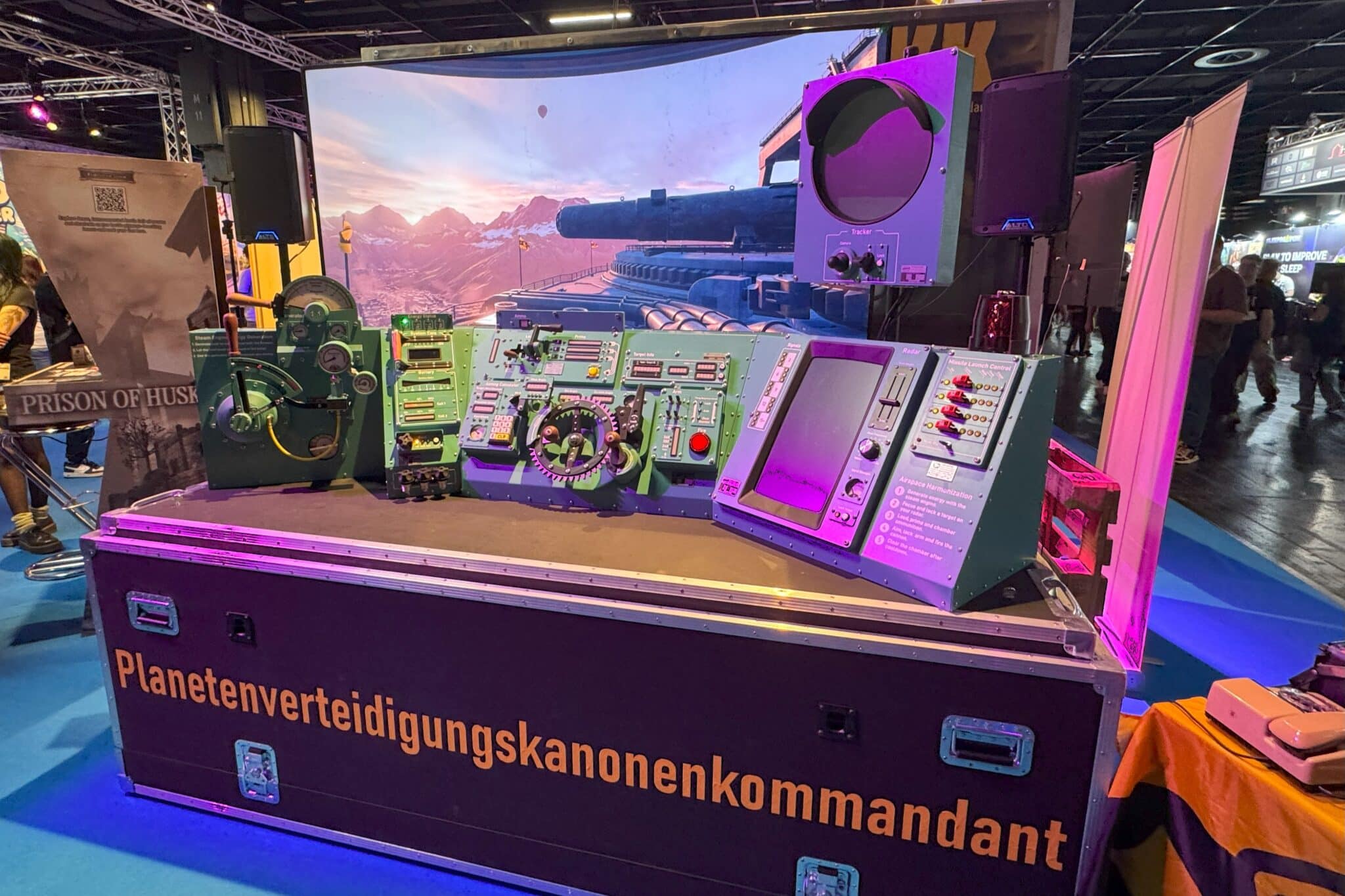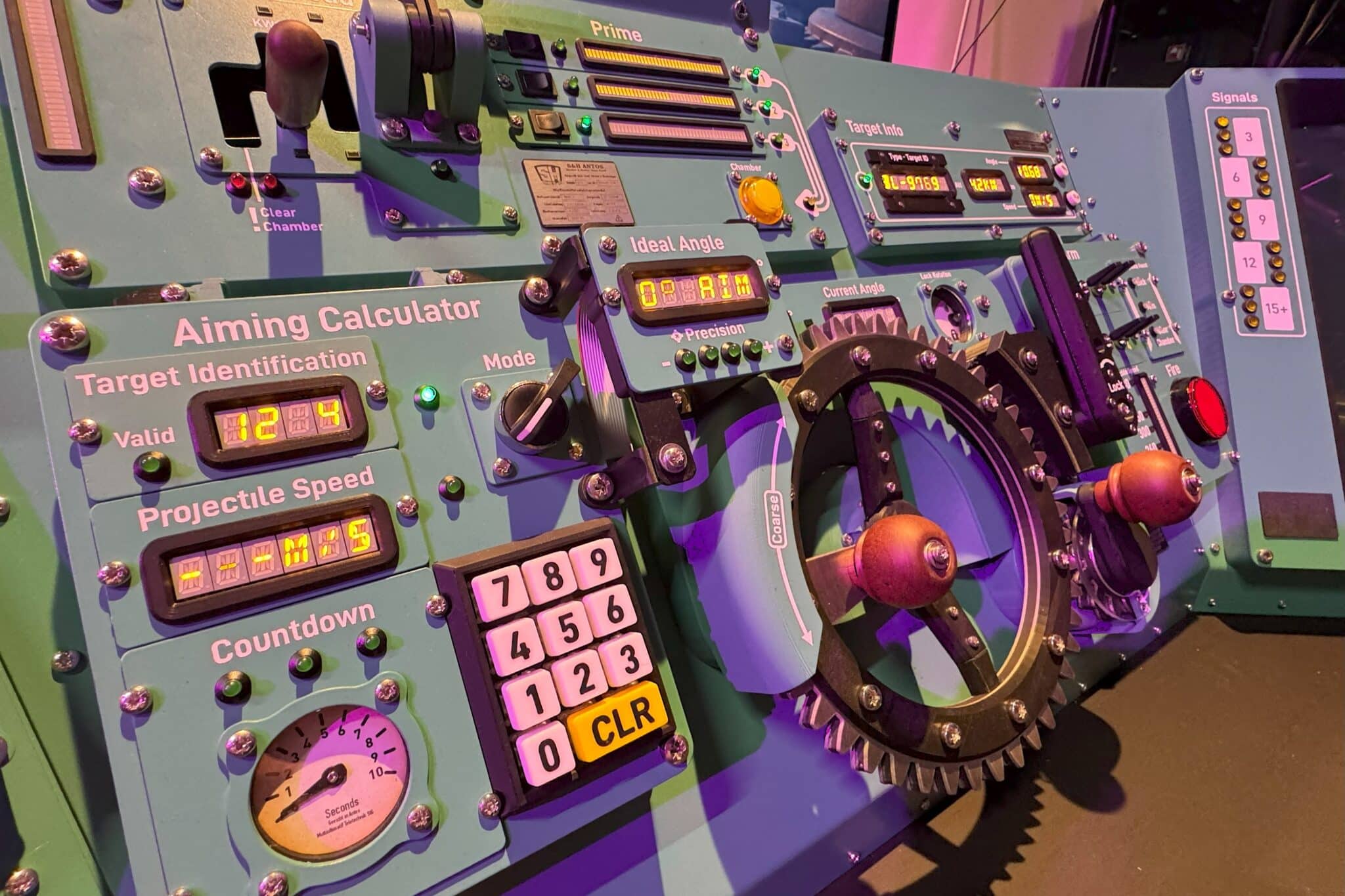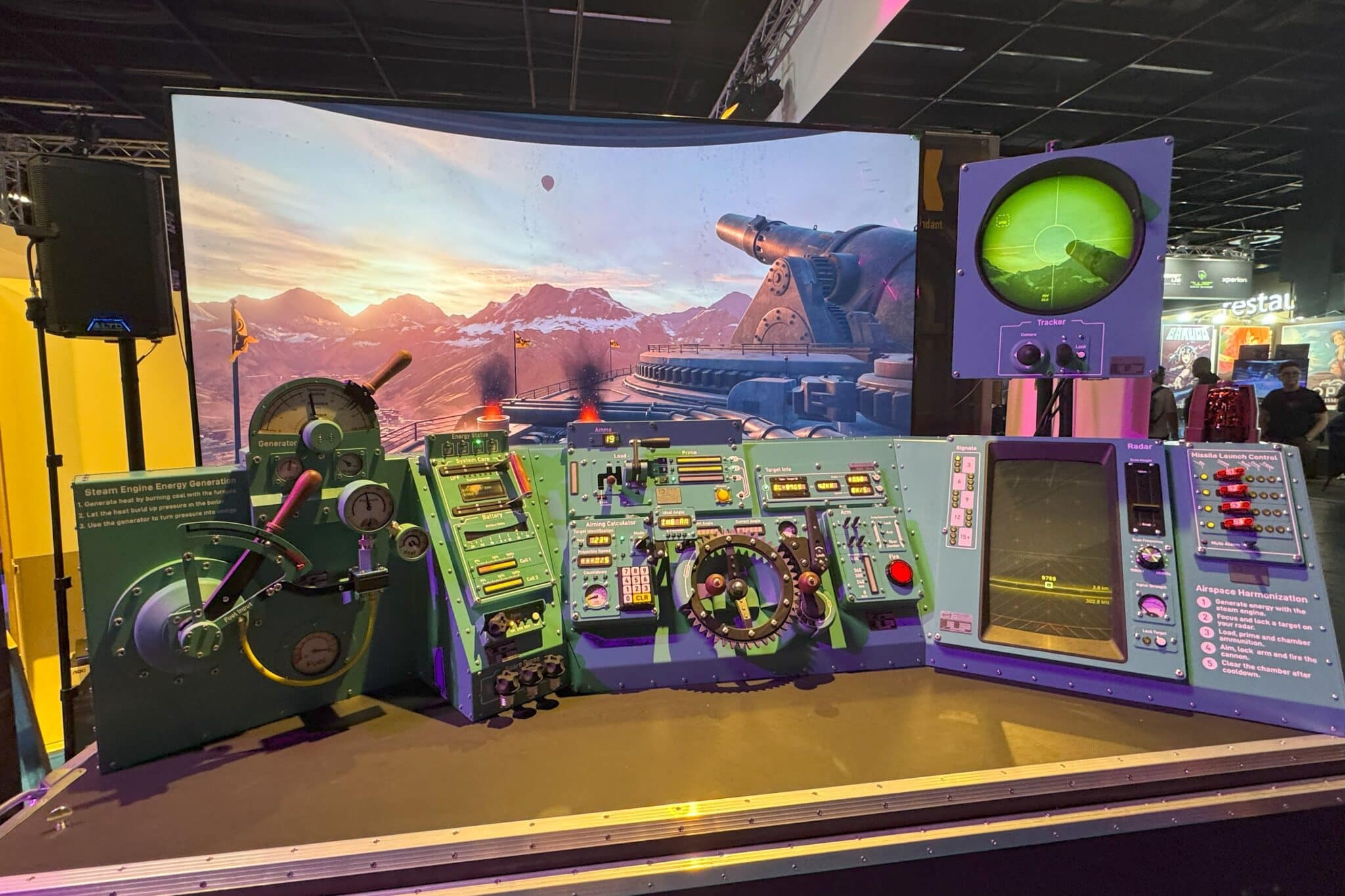At gamescom, our author Dani got to try out the unique puzzle game PVKK and even sit in a “real” cannon cockpit.
She reveals just how much fun this wild button-pushing game is already.
“Wow, I’d love to press buttons and pull levers in a command center!” Just a few days ago, I told my mother about this childhood dream of mine. The umpteenth rerun of Alien was playing on the screen, and I watched Ellen Ripley with envy as she flipped switches, typed in codes, and made everything in the spaceship cockpit flash and beep at the touch of a button.
Now I’m standing at gamescom in front of one of the coolest booths in the Indie Arena: Instead of a table, chair, and PC, what awaits me at my appointment to play Planetenverteidigungskanonenkommandant (say that three times fast!) is a setup with physical buttons, monitors, controls, and more. What looks like it was ripped out of a real cockpit is my playground for the next 20 minutes.
I become the Planetenverteidigungskommandant (yes, I’m going to write out the name every time!) and have a simple task, which isn’t actually that simple: Shoot down enemy aircraft before they do the same to me.
Don’t press the red button!
My instincts are screaming “Press everything at once!” in my ear, but I obediently hold back and follow the instructions of my general, René, a developer at Bippinbits and button connoisseur. He guides me through the initially rather overwhelming jungle of switches: if I push this lever up, I answer a call from Operations Analyst Schwarz, who gives me information about my current mission.
I move another slider and turn a knob to lock onto the enemy object in the sky. With this lever on the left, I start the engine, and with the lever above it, I control the pressure. As soon as I start the furnace, I see fire coming out of the pipes on the screen in front of me. Phew, everything’s right.
Next, I prepare the guns. I set the firing angle, enter the coordinates into the system, activate the missiles, and press the big red button— BOOOM. Bull’s-eye! I hear enthusiastic applause behind me and feel really good too.
I shoot the next target with almost no help from René. Even in this short time, I’ve been able to memorize most of the procedures. But because this time I’m shooting at a moving aircraft instead of a hot air balloon, I have to set the correct trajectory and fire at the right moment to hit the target.
But that’s no problem for a professional planetary defense cannon commander like me, of course. BOOOM. The image shakes, and on my monitor to my right, I see a close-up of the explosion, followed by more applause behind me. It’s so simple, but pressing buttons just feels so damn good!
Is that all?
Pressing buttons and flipping switches may be the core element of the gameplay, but Planet Defense Cannon Commander has more to offer. It’s a story-driven game with four planned acts, in which we can even make decisions that change the course of the game.
As we sit in our little bunker, taking care of our needs, improving our home, sipping tea and fiddling with the cockpit panels, we are contacted by radio by our superiors. But the enemy faction also taps into our comms and tempts us with counteroffers.
Do we remain loyal commanders or do we turn against our own regime? Our decisions have a direct influence on the story and the ending. According to René, the simulation is supposed to feel a bit like the bureaucracy simulation Papers, Please. So we develop a daily routine, are given more and more tasks, make independent decisions – and probably make a lot of mistakes in the process.
The fascination of switches
The idea of developing a simulation revolving around pressing buttons came to René from a sound sample. The developer liked the sound of a simple button press so much that he wanted to incorporate it into a game – and now he’s building an entire game around it.
At gamescom, publisher Kepler Interactive and the development team will of course be presenting an impressive setup – but how can this tactile feeling be translated into the game? “We use a trick that you shouldn’t really do in game design,” explains René.
To simulate the heavy switches, levers, and cranks, the mouse pointer remains frozen in one place as long as we hold down the button. Moving the mouse executes the movements. René also places a lot of emphasis on sound effects. A click and creak here, a metallic clang there, and a ear-splitting siren as the icing on the cake.
We’ll find out whether the rewarding feeling and childlike joy I experience at the indie booth of Planetenverteidigungskanonenkommandant can be translated into the game when it is released in summer 2026.
If you want to try out the simulation for yourself in advance, you can look forward to a demo, which is also scheduled to follow next year. Or you can play it now at gamescom in the Indie Arena Booth in Hall 10.2. Feel free to say hi to René!
Editor’s conclusion
Before my preview, I had dismissed PVKK as a little puzzle game set in a bunker that I might check out at some point. But now that I’ve gotten a taste for pressing buttons and flipping switches, I’m really looking forward to its release next year. I love it when developers dare to try new things and play around with unusual ideas.
I am a little worried, though, that the haptic experience and satisfaction will be lost when I play the simulation with a mouse and keyboard. And we won’t know until release whether the gameplay loop will provide enough motivation to keep me entertained for more than twenty minutes.
After all, Planetary Defense Cannon Commander (one last time!) wants to be a serious story simulation and not just a short gimmick for someone like me who had a childish urge to press a red button.

